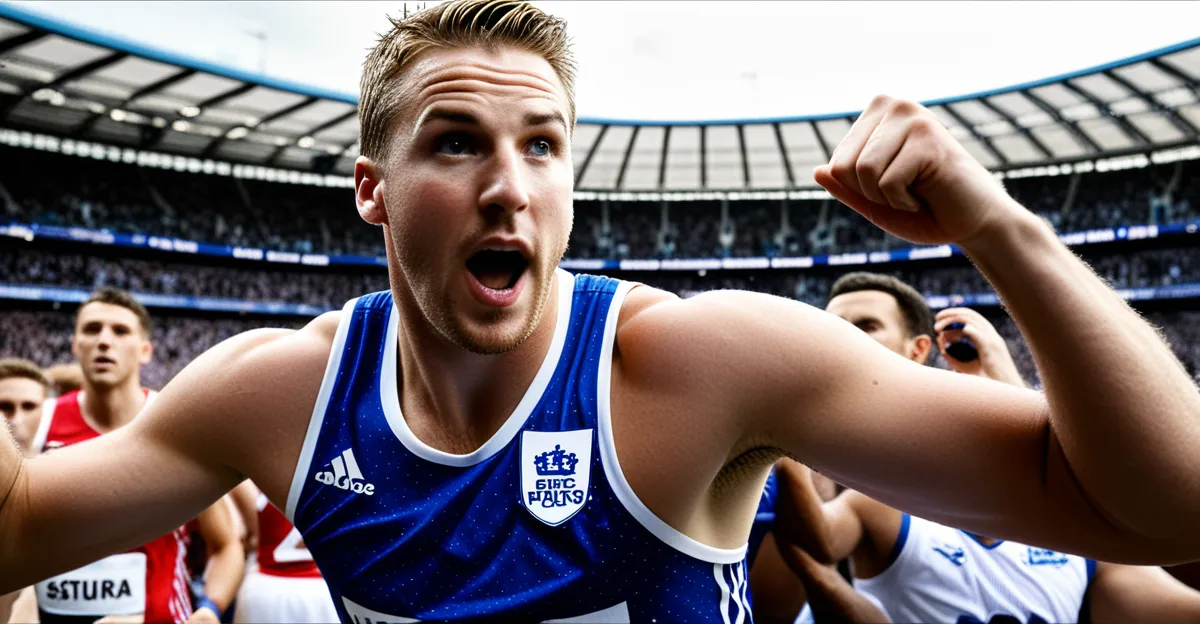Benchmarking Current Success and Identifying Limitations
Understanding UK sports performance requires a clear view of recent achievements and persistent barriers. Nationally, the UK has celebrated remarkable success across sports such as cycling, athletics, and rowing, often excelling at international championships. Yet, this success is uneven across disciplines and regions, revealing structural weaknesses in the broader sporting framework.
A key limitation lies in systemic sports barriers including unequal access to facilities, inconsistent funding, and fragmented support for emerging talent. These issues constrain peak performance and limit talent progression from grassroots to elite levels. Performance analysis highlights gaps in athlete development pathways, coaching quality, and resource distribution.
This might interest you : How Has Technology Transformed UK Sports in Recent Years?
Comparative analysis with countries like Australia and Germany shows how integrated approaches to sports governance and sustained grassroots investment correlate with consistent success. These nations benefit from cohesive strategies that bridge community sport and elite competition. For the UK, identifying these systemic weaknesses through robust performance analysis is essential. It reveals that while national sports achievements are commendable, significant improvements are needed to overcome limitations and elevate overall performance consistently on the world stage.
Learning from Global Leaders and Case Studies
Examining international sports best practices reveals clear strategies that propel consistently successful sports nations ahead. Countries like Australia, Germany, and New Zealand develop comprehensive structures prioritizing aligned talent pathways, robust infrastructure, and unified governance. These nations integrate grassroots programmes with elite development, ensuring smooth progression for athletes.
Also read : What Are the Key Strategies That Drive UK Sports Success?
One key differentiator is the emphasis on coordinated support systems. For example, centralized training academies combine coaching expertise, sports science, and athlete welfare services, creating an ecosystem that nurtures potential from early stages through to high performance. Such integration contrasts with the UK’s more fragmented approach, highlighting gaps identified through performance analysis.
International sports case studies also illustrate how sustained investment in community sport promotes broader participation, widening the talent pool. This can address long-standing sports barriers by increasing access to quality facilities and nurturing diverse talent. Lessons from these models suggest that embedding collaboration between local clubs, schools, and national governing bodies strengthens athlete development.
Adopting these global best practices requires adapting successful elements to the UK context, ensuring strategies are culturally and structurally appropriate. Focusing on cohesive support networks and aligning funding mechanisms stands out as essential for replicating international success while overcoming current limitations in UK sports performance.
Benchmarking Current Success and Identifying Limitations
Assessing UK sports performance reveals impressive national sports achievements, particularly in cycling and rowing, which have propelled the UK to global prominence. Yet, these successes mask underlying sports barriers that impede broader, sustained growth. A key limitation is uneven access to coaching and training resources, hindering talent progression and contributing to regional disparities.
Performance analysis identifies inconsistent athlete development pathways as a critical obstacle. Promising athletes sometimes lack clear, supported routes from grassroots to elite levels due to fragmented governance and variable funding. This disjointed approach reduces the efficiency of resource allocation and limits potential attainment.
Comparisons with leading countries show that nations excelling in international sports proactively address these barriers. For example, their integrated systems focus on continuous athlete monitoring and customized support, ensuring no talent is overlooked. In contrast, the UK’s isolated efforts can lead to gaps in athlete readiness and underutilized talent pools.
This detailed performance analysis underscores the necessity of systemic reforms—such as coordinated funding and uniform development frameworks—to overcome the current limitations. Without addressing these core issues, replicating or expanding upon the UK’s national sports achievements remains challenging.
Benchmarking Current Success and Identifying Limitations
Recent UK sports performance showcases impressive national sports achievements, especially in cycling and rowing where athletes frequently excel on global stages. However, performance analysis reveals persistent sports barriers that hinder the broader scaling of success. These include unequal access to quality coaching and facilities, alongside fragmented governance structures that affect funding allocation and athlete development pathways.
Systemic challenges manifest in regional disparities, where promising athletes outside major hubs face limited opportunities. This inconsistency disrupts seamless progression from grassroots to elite levels, leaving talent underdeveloped or overlooked. Furthermore, the lack of centralized coordination in athlete support reduces the overall efficiency of resource deployment.
Comparative evaluation with countries like Australia highlights how integrated sports systems help overcome such barriers. Their unified approaches encompass continuous athlete monitoring, well-defined development frameworks, and aligned funding mechanisms. These structures ensure early talent identification and sustained progression.
The UK’s current fragmented model contrasts sharply with these strategies, demonstrating the need for coordinated reforms. Addressing these systemic limitations through comprehensive performance analysis is vital to transform the UK’s sporadic successes into enduring dominance across a wider range of sports disciplines.
Benchmarking Current Success and Identifying Limitations
The UK sports performance landscape boasts notable national sports achievements, especially in cycling and rowing where international medals underline success. However, performance analysis reveals persistent sports barriers limiting broader progression. These impediments include unequal access to coaching expertise and quality facilities, which disproportionately affect athletes from less advantaged regions.
Such sports barriers disrupt the continuity and effectiveness of athlete development pathways. Fragmented governance and inconsistent funding exacerbate challenges, creating gaps where talent may stall or go unrecognized. For example, some regions suffer from limited grassroots infrastructure, impeding early talent nurturing essential for high performance.
Comparatively, top-performing countries adopt integrated systems that tackle these weaknesses by aligning performance analysis with comprehensive athlete monitoring, consistent coaching standards, and uniform resource allocation. These nations’ strategic cohesion enhances talent identification and progression, ensuring sustained success.
In contrast, the UK’s segmented approach struggles to replicate these gains. Addressing systemic sports barriers calls for unified governance and targeted investment to standardize athlete development. Refining UK sports performance through in-depth performance analysis is crucial, providing a roadmap to convert isolated victories into sustained international competitiveness.





